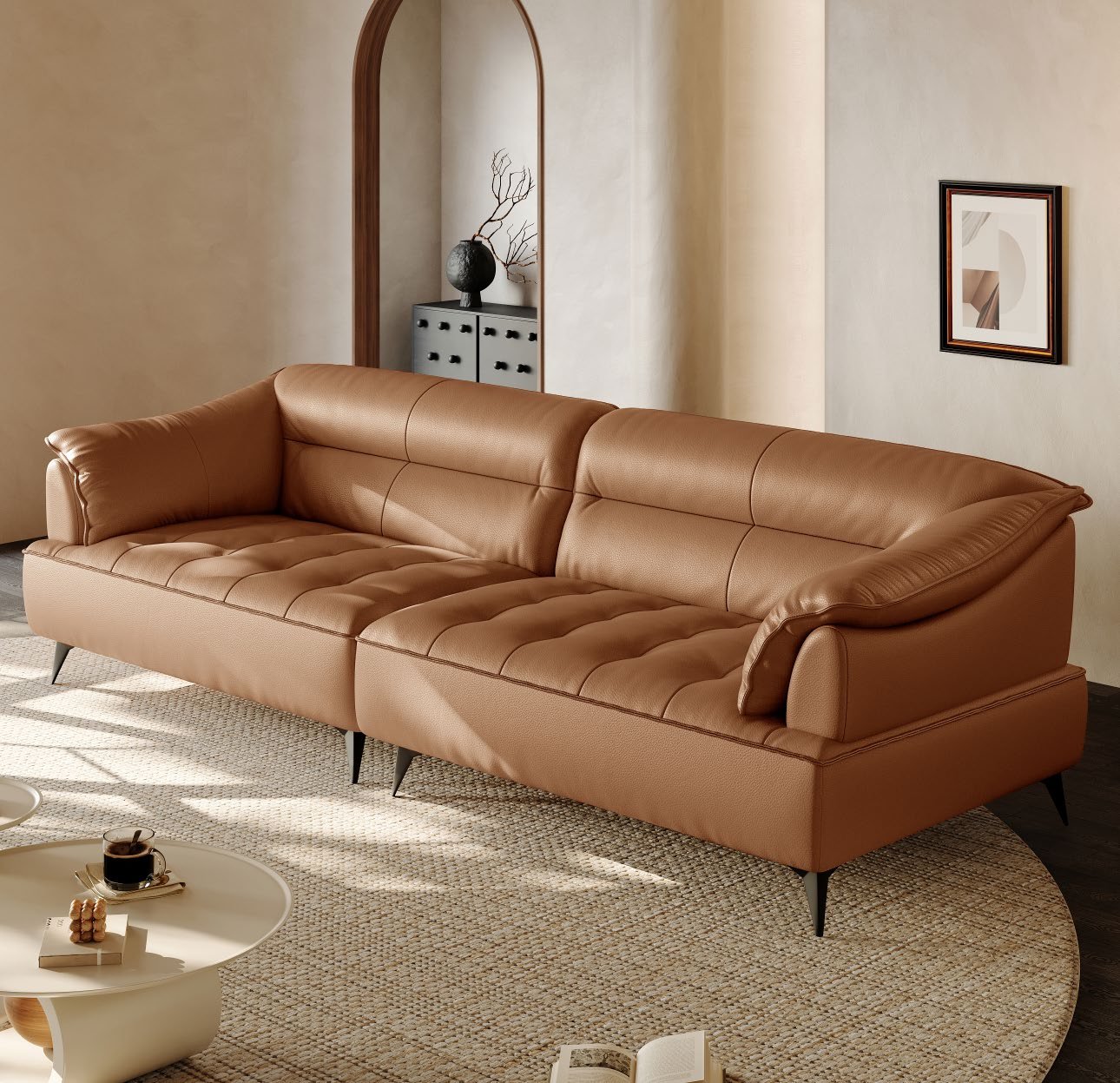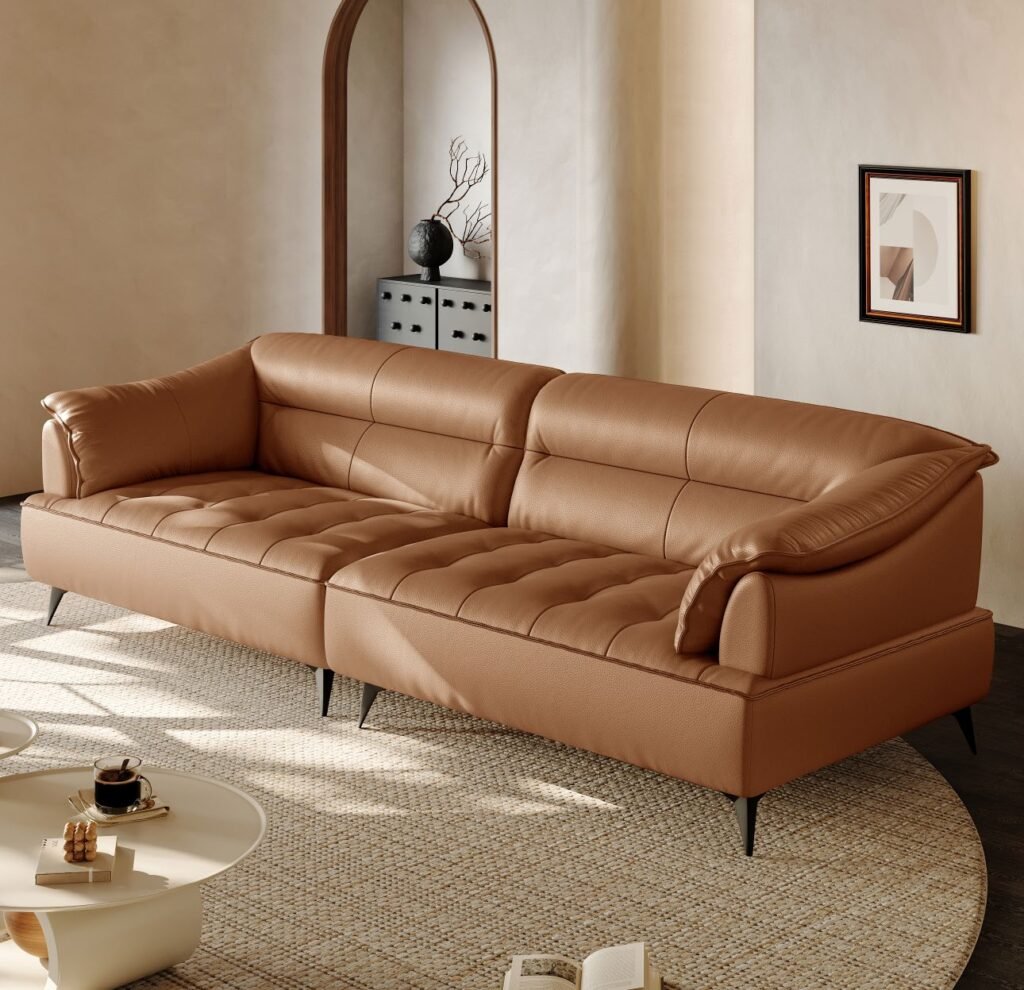
Crafting Comfort,
Elevating Spaces.

Crafting Comfort,
Elevating Spaces.


A sofa is more than just a piece of furniture; it’s the centerpiece of living rooms, a place of comfort and relaxation. But have you ever wondered how a high-quality sofa comes to life, from raw materials to the final, beautiful product? The process is more intricate than you might imagine, involving craftsmanship and precision at every step. Let’s take a closer look at the journey of sofa-making, and what goes into creating the perfect blend of comfort and style.
Every sofa begins with a vision. This initial stage defines the sofa’s look, functionality, and the stability of its structure.
Designers start by sketching the blueprint, balancing aesthetics with practicality and comfort. They consider market trends and ergonomic principles, making sure the design is both stylish and user-friendly. This step ensures the sofa will not only look great but also provide long-lasting comfort and support.
Once the design is ready, it’s time to choose the right materials. The choice of materials affects not just the appearance but also the durability and comfort of the sofa. Common materials include:
The frame is the backbone of the sofa, determining its shape and providing structural stability. It’s usually made of solid wood or plywood and goes through several stages of cutting, assembly, and sanding.
High-quality wood is cut to precise measurements based on the design blueprint. Precision is key here to ensure that all pieces fit perfectly during assembly.
The pieces of the frame are assembled using either traditional joinery techniques like mortise-and-tenon joints or modern methods like bolts and screws. Mortise-and-tenon joints are particularly strong, locking the wooden pieces together without needing metal fasteners, while screws offer quick assembly.
Once assembled, the frame is sanded down to remove rough edges and splinters, creating a smooth surface. Reinforcement is also added to high-stress areas, like corners and armrests, to ensure the frame holds up over time.
The spring system is essential for comfort, providing the bounce and support that make sitting on the sofa enjoyable. It also helps the sofa maintain its shape over time.
The two most common spring systems are serpentine springs and pocket springs. These are securely attached to the frame in a grid pattern to evenly distribute weight and provide consistent support.
Some manufacturers add additional support systems, such as webbing or metal grids, to further enhance durability and prevent sagging.
Cushions and upholstery are what turn a sturdy frame into a comfortable, stylish sofa. This stage is all about making the sofa soft, cozy, and visually appealing.
The cushions are filled with materials like high-density foam, memory foam, or even a combination of foam and down feathers. Each type of filling offers different levels of firmness and support, tailored to customer preferences. The filling is carefully layered to ensure even distribution and prevent uneven wear over time.
The fabric or leather is cut according to the sofa’s shape, and expert craftsmen carefully stitch each piece together. The stitching not only adds durability but also enhances the sofa’s design. High-end sofas often feature double-stitched seams for extra strength and a polished finish.
Now, all the separate components—frame, cushions, upholstery—come together for the final stage of assembly.
At this point, the cushions are attached to the frame, the arms and back are fitted, and any additional decorative elements, such as tufting or trim, are added. The sofa is now starting to look like its final self.
Before the sofa is ready for shipping, it goes through a rigorous quality inspection. This includes testing for comfort, checking the firmness of the cushions, examining the stitching, and making sure the structure is solid. Only sofas that pass these tests are approved for sale.
The final step before the sofa reaches its new home is packaging and shipping.
The sofa is carefully wrapped with protective materials such as foam padding, plastic covers, and cardboard boxes to prevent any damage during transit. Special care is taken to protect the sofa’s corners and arms, which are the most vulnerable to damage.
Once packed, the sofa is shipped out according to the buyer’s location, whether it’s going to a local retailer or being shipped overseas. The process is now complete, and the sofa is ready to bring comfort and style to its new owner.
The creation of a sofa is an intricate process that combines craftsmanship, technology, and design. From the careful selection of materials to the precise construction of the frame, springs, and cushions, each step plays a crucial role in delivering the comfort and durability we expect. Next time you sink into a beautifully made sofa, you can appreciate the skill and attention to detail that went into creating this essential piece of furniture.